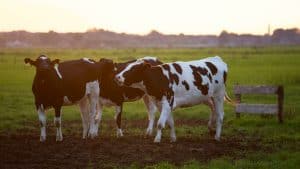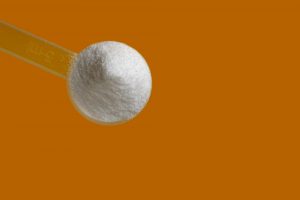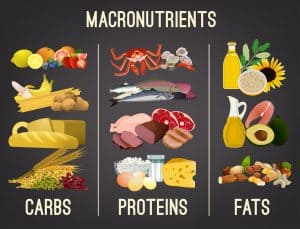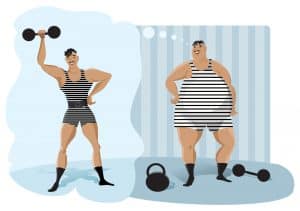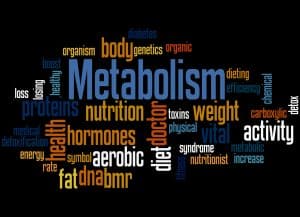For ages, I struggled to shed fat as I attempted to build muscle. I would switch back and forth between various bulking and cutting diets but couldn’t keep hold of my gains.
Body recomposition is a well-known method within the fitness fraternity, but I’d never seen it in action. So, I gave it a shot.
I’m here to explain all about the “holy grail” of fitness, what the pitfalls are, and how you can build muscle and lose weight at the same time.
- Table of Contents
What Is Body Recomposition?
In the world of physical fitness, body composition represents the percentage of bone, fat, muscle, and water within a human body.
Muscular tissue demands less space than fat does. Yet, it’s not only one’s body composition that determines leanness—weight does too.
That said, the numbers on the scales don’t offer a clear picture. Your scale doesn’t discriminate between muscle loss and fat loss. As a result, it can be a poor indicator of your overall percentages.
If you spin this basic description around with the prefix of “re-,” you can deduce that body recomposition is to rework, or revisit the entire structure and change it.
Where many weight-loss plans aim to reduce fat mass alone, body recomposition takes it a step further—emphasizing the need to gain muscle simultaneously. Thus, your total number of calories burned per day also increases.
It’s known as the “holy grail,” not only because it’s ideal—it can also be supremely challenging to build muscle and lose weight at the same time.
What Science Says
In 2016, researchers at McGill University set out to determine the efficacy of body recomposition. Forty adult men participated in a study where their calorie intake was cut by nearly 40 percent.
These individuals were split into two groups—high protein (HP) and low protein (LP), both had calorie intake restricted.
As a result, the HP group saw an overall growth of approximately 2.5 pounds in muscle. The other participants, while gaining no muscle, didn’t lose mass either.
In terms of weight loss, the high-protein group dropped around 10.5 pounds on average. The low-protein group came in at about 8 pounds.
We must note that both parties were working out and lifting six-days-a-week during this study. This factor alone could lead them to a stronger, fitter physique. However, it also can’t account for the entirety of the results.
Based on this study, as demanding as it was, one could glean that losing weight while gaining muscle is possible. However, the right nutrition and workout strategy is necessary to make it happen.
While doable, many in the fitness industry will tell you it’s not easy to achieve, highly depends on the conditions, and is not for everyone. Furthermore, ill advice runs rampant.
Men vs. Women

In a battle of the sexes, men indeed lose weight faster than women—but why? Male body composition naturally has more muscle, thus a higher metabolism. Consequently, they’re able to shed fat more efficiently.
In one study, overweight men and women were given the same calorie deficit for eight weeks. The male group lost around 26 pounds on average over that period, while the women saw a decrease of approximately 22 pounds.
But fat loss wasn’t the only factor in favor of the men. They also experienced a lower heart rate and less body fat overall, along with a reduced risk for metabolic conditions.
Furthermore, the guys reduced more fat mass around the abdominal region (visceral fat). This type of fat enhances metabolism during weight loss conditions meaning more calories expended.
Conversely, women traditionally carry more subcutaneous fat in their lower body—thighs, buttocks, and hips. This explains why the female group managed to lose more inches in the hip area. However, this type of fat isn’t as metabolically active.
Experts concluded that body composition isn’t the only factor. Men and women physiologically adjust to energy deficits in different manners.
Body Fat: Ranges and Recommendations
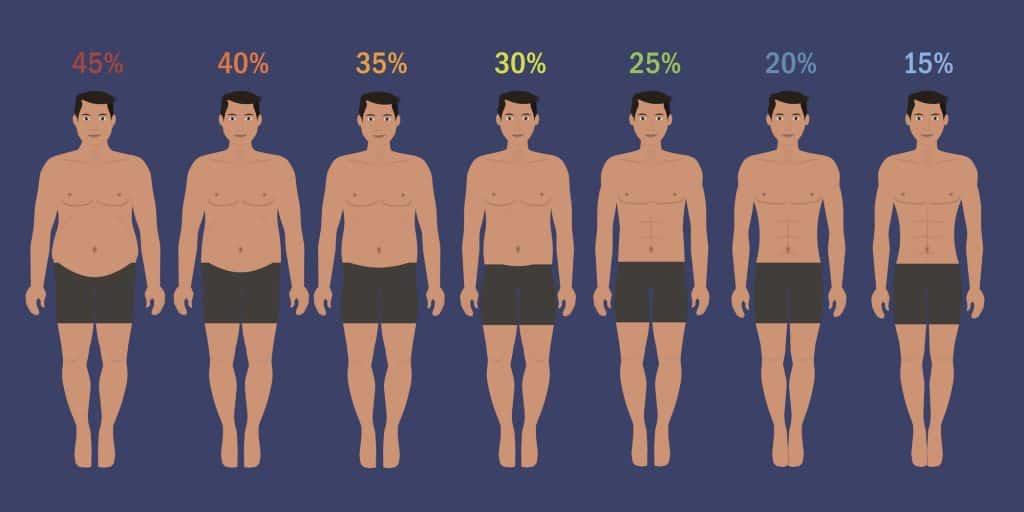
To understand how fat loss and muscle growth can happen simultaneously, we need to have a better grasp of fat itself. And I don’t mean tugging at your love handles.
How the Body Uses Fat
The body utilizes fat in two main ways which constitute your total body fat percentage:
- Essential body fat.
- Stored body fat.
Essential
Essential body fat describes the required amount needed to maintain our daily activities and ensure our organs work as they should. This pertains, in particular, to reproductive organs.
It’s precisely the reason the amount of essential body fat in women is higher than in men—thanks to hormonal functions and the demands of childbearing. For females, approximately 10 to 12 percent of their overall body mass is this fat type.
Body fat stores for men are naturally lower across the board, where essential fat comes in at around 2 to 4 percent on average.
Stored
The second consists of accumulated fat predominantly located under the skin—adipose tissue. Made of different types, the role of this matter is to protect our bodies and provide insulation.
As it pertains to physical activity, this category represents our energy reserves that build-up when we ingest more than we expend. Thus, the percentage decreases when one uses more energy than they consume.
When added to the category above, the result equals your total body fat percentage.
Total Body-Fat Percentage

A healthy body-fat percentage can vary significantly from person to person. According to the American Council on Exercise, an acceptable range for most women is around 25 to 31 percent. For their male counterparts, it’s between 18 and 25 percent.
That said, these ranges indicate a baseline level for the average individual. If one falls above either range, they will classify as “overweight” or “obese.”
If a woman’s body fat measures between 21 to 24 percent, she falls into the “fit” category. The numbers for men are 14 to 17 percent.
For athletes, these digits are even lower at 14 to 20 percent and 6 to 13 percent for women and men, respectively.
Depending on your goals for fat loss and muscle gains, these numbers provide a wide range for bodybuilders and fitness fanatics to work towards.
However, essential fat, is essential.
Dropping below the recommended base levels could have dire consequences. This includes, but is not limited to, increased risk of fractures, gastrointestinal issues, loss of muscle tissue, and more.
Fat Loss Myths
To shed fat, you are lead to believe a myriad of myths that may stop you from achieving your desired outcome. Here are just a couple:
- Myth 1: You have to avoid entire food groups. Doing so can deplete your energy, destroy your gains, and make recovery impossible. Furthermore, evidence indicates it’s not a long-term solution for fat loss.
- Myth2: There is a magical number of meals per day. Contrary to popular belief, six-meals-a-day isn’t necessarily the golden ticket. It’s proven false by more than one study that this leads to weight loss.
Energy Balance
Instead of succumbing to weight loss diets that leave you suffering, body recomposition sees energy balance as the answer.
What does that entail? At the foundation, it’s pretty simple. It refers to the relationship between your energy input and output.
Meaning, how much energy you provide your body with through eating and the energy used through physical, and cellular activity. The latter constitutes what’s required for all of your physiological processes to occur.
It all boils down to burning more energy than you consume. When weight loss alone matters, this is straightforward.
However, it becomes complicated when you add strength training because not having enough energy can produce negative effects on your gains. Energy balance becomes essential when inching towards the “holy grail” of your goals.
Training for Body Recomposition to Build Muscle and Lose Fat at the same time
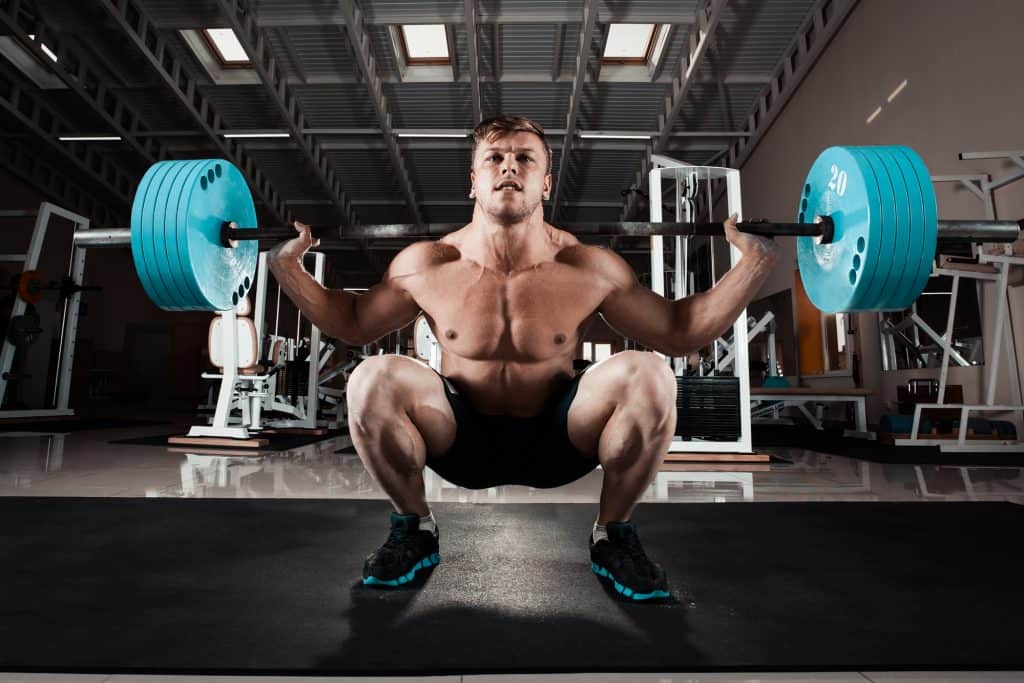
There are two main factors to consider when looking to build muscle and lose weight at the same time—your experience and training state.
Have you just come off a long pause from weightlifting? If that’s the case, your body should be able to reach the grail with relative ease.
However, if you’ve been pumping iron for months on end with no break in sight? Body recomposition will be more difficult.
There are always exceptions to any rule. For example, an individual who has been lifting for months, or even years, without an emphasis on compound weightlifting. Meaning, using lifts that cover multiple muscle groups at once.
If that’s you, there’s a chance you may benefit from what’s referred to as “newbie gains.” In this case, you’d fall back into the first category.
Why so Challenging?
Physiologically, fat loss, and muscle growth are not a peas-and-carrots sort of friendship. In fact, to achieve the latter, you have to be in caloric surplus. While you should be in a caloric deficit state to attain the former. It’s more akin to a “yin” and “yang” situation—they may complete each other, but getting them to work together takes skill.
When your body is in a negative energy balance due to a caloric deficit, the overall fat mass drops. As a result, your body struggles to synthesize proteins. Muscle loss occurs because your body is unable to balance the degradation rate with production.
If your goal is to maximize muscle growth, a calorie deficit becomes difficult to maintain.
Based on your activities in a given day, your total daily energy expenditure will change. Because it functions like a moving target, it’s way too easy to overestimate one’s energy needs.
Back to the irreconcilable relationship between muscle and fat.
To successfully build muscle while in a calorie deficit, your protein synthesis rate needs to be high, muscle breakdown rates low, or both. You have to encourage your body to make proteins any way it can, to make up for those lost from the shortfall.
The reason our “newbies” are more successful at body recomposition is a “hyper response” effect that occurs. Consequently, this outweighs the decrease in protein synthesis that the deficit creates.
How to Do It
Where your calorie intake and training methods are concerned, there are three primary components at play.
1
Compound Lifting
That’s right. If you haven’t focused on compound heavyweights until now, you’re prime to reach the “holy grail.” However, in your mission to get there, incorporating this style of lifting will be necessary.
High reps and isolation exercises will only get you so far. It’s the opposite of what many would assume.
For natural weightlifters, this type of training is key for strength and muscle growth. Meaning, those that don’t take illegal substances to increase gains.
We recommend heavyweights weekly at around 80 to 85 percent of your capacity. Your rep range could be anywhere between four and seven. Don’t put off your bench press, deadlifts or squats.
2
High-Intensity Cardio
To build muscle and lose weight at the same time, you’ll need to incorporate high-intensity cardio. Love it or hate it, it’s necessary for the plan to work.
Cardio isn’t always the answer to leanness. But there comes a point where adding it to your weight-loss plan is necessary. This is the case with the “holy grail,” so you’re able to burn enough energy to keep up with your fat-loss goals.
To avoid burning muscle, you’ll want to take the “less is more” approach. Don’t be tempted to go hardcore with five to seven sessions of low-intensity cardio per week.
Instead, amp up your intensity with a maximum for two hours weekly. HIIT programs, or high-intensity interval training, are advantageous here.
Not a fan? Running, jump rope, or cycle sprints are alternatives to try.
3
Calorie Deficit
It’s the foundation for body recomposition. If you aren’t in a calorie deficit, you won’t lose weight. Yet, at the same time—if you cut back too much, you run the risk of losing muscle mass.
A sensible balance here would be a 20 to 25 percent decrease. This range will help you drop fat while also preserving muscle.
To work out your requirements, take your current caloric total and multiply by 0.25. This indicates the number of calories to drop. Take that figure and deduct it from your current total. The difference will be your adjusted daily intake.
Example: 2500 (current caloric intake) x 0.25 = 625 calories
2500 – 625 = 1875 revised total daily intake
Alternatively, using the calorie calculator below will do the math for you.
4
Macros
In terms of protein, the recommended dietary intake (RDI) for the average person is 0.8 grams per pound. However, with this method, your consumption needs to increase, whereas your carbs will see a decrease.
If you’re already relatively lean, you may need to raise your fats slightly and lower your carbs even further.
Based on exercising between four and six times per week, a good starting point would be the following macro measurements. For each pound of body weight, add:
- 1.2 grams of protein.
- 1 gram of carbohydrates.
- 0.2 grams of fat.
Once you have your numbers set, use those to put together a meal plan.
Here’s a calculator that helps you figure out how much macronutrients you need daily to reach your goals.
Nutrition For Body Recomposition to Build Muscle and Lose Fat at the same time
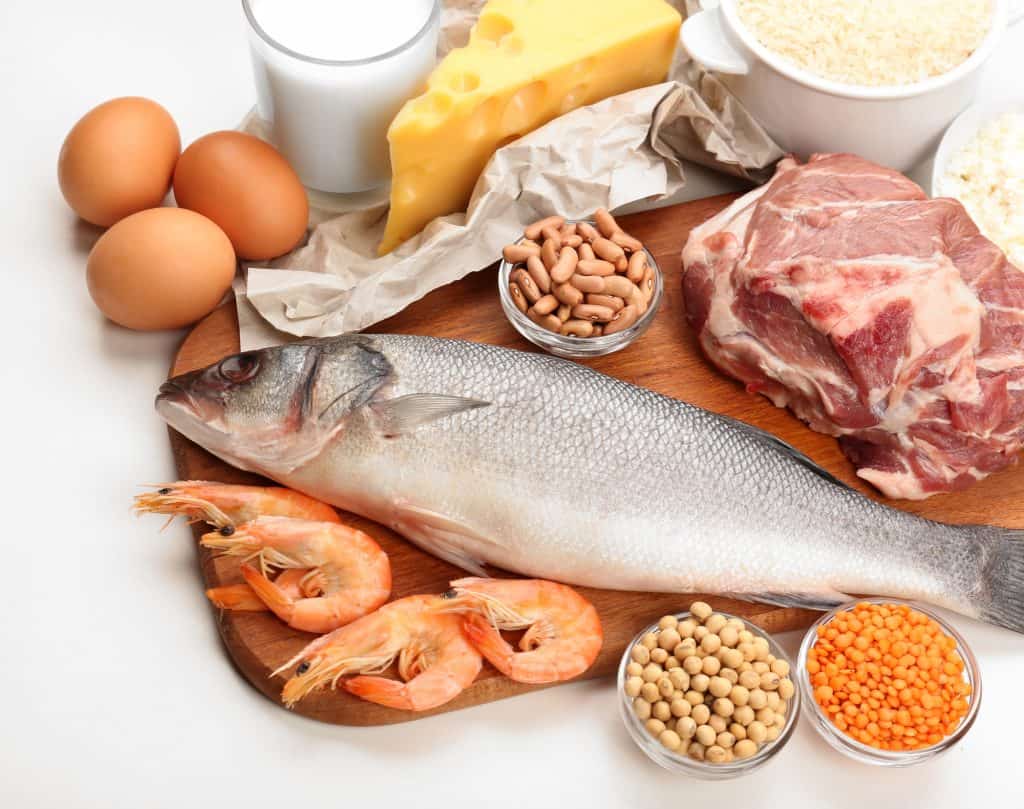
Working with a caloric deficit, you need to keep an eye on the scale and your body fat. Remember, these percentages are to preserve your current muscle mass, which doesn’t provide a lot of room for gains.
As time goes on and your lean mass slowly increases, you’ll want to adjust your shortfall accordingly to avoid muscle loss.
At this point, increase your daily macro portions (while still in a deficit mode). For example, your protein intake could go from 1.2 grams to 1.5 grams per pound of bodyweight. Your carbs may nearly double to 2 grams. Keep most of your carbs intake around your training.
If you hit your training hard, most of your calories will go toward muscle production and energy versus fat deposits. Once you get closer to your desired body-fat percentage, meaning, your lean mass goals, your calories will drop again.
This back-and-forth caloric manipulation game is part of the process and one of the primary reasons many suffer to achieve “holy grail”. With discipline and organization, though, you can reach your target.
Opt for foods that benefit lean muscle growth, plus include slow-release carbs, and healthy fats. There are six nutrient-dense examples below for you to incorporate into your meals.
- Oatmeal—with 5.5 grams of protein per cup and 27 grams of carbs, this breakfast staple offers sustained energy and a boost in recovery.
- Cottage cheese—suitable as a snack with whole wheat crackers, it contains a whopping 25 grams of protein per 1 cup.
- Brown rice—this slow-digesting carbohydrate provides energy that lasts long after it’s consumed. One cup will give you around 51 grams of carbs.
- Olive oil—containing 13 ml of fat per tablespoon, it’s a healthy alternative to bottled dressings. Plus, it’s a source of omega-3s to fight inflammation.
- Beef—in just 4 ounces, you’ll receive 19 grams of protein, along with a slew of vitamins and minerals including iron. Opt for lean cuts vs. fattier options and go for grass-fed.
- Eggs—another great source of both protein and fat, one large egg has approximately 6 grams of the former. Many associate that yellow goodness with “bad fat,” but don’t be afraid to enjoy the yolk in moderation. Research indicates that portion will aid in muscle growth at a 40 percent higher rate than whites—plus, the fatty part is way more delicious.
Recovery and Sleep
Many of us are guilty of focusing on the training and forgetting about what happens after. Yet, without ample recovery, your goals will fall to the wayside, plus to build muscle and lose weight, it’s essential.
The duration and frequency of your recovery will depend on your needs and intensity of training. How well do you handle fatigue and other stressors that impact your workout and diet plans?
All factors must be considered to maximize your recovery rate.
Some bodybuilders take advantage of “recovery weeks” to recover the central nervous system and release the stress off the joints and tendons. If you stick with disciplined heavyweight sessions regularly, this is recommended about once every few months or 8-12 weeks.
Heavyweights do stimulate muscle growth, but our time outside the gym is where those muscles recover and increase in size.
Don’t wait until you’ve overtrained to do this.
Catch Some Sleep
Aside from taking advantage of rest days, sleep is also vital.
One week of poor quality sleep can lead to a decrease in hormone levels that are necessary for our goals. This includes, but is not limited to, testosterone.
The AASM (American Academy of Sleep Medicine) and the SRS (Sleep Research Society) recommend adults, on average, should get a minimum of seven hours sleep per night. It needs to be on a regular basis too.
Personally, I would strongly recommend taking a small nap of 1-2 hours after the workout.
To avoid the consequences of sleep deprivation over time, consistency is crucial. Next time your buddies want to hit the bar at 9:00 pm mid-week, give it a second thought.
Supplements for Body Recomposition to Build Muscle and Lose Fat at the same time
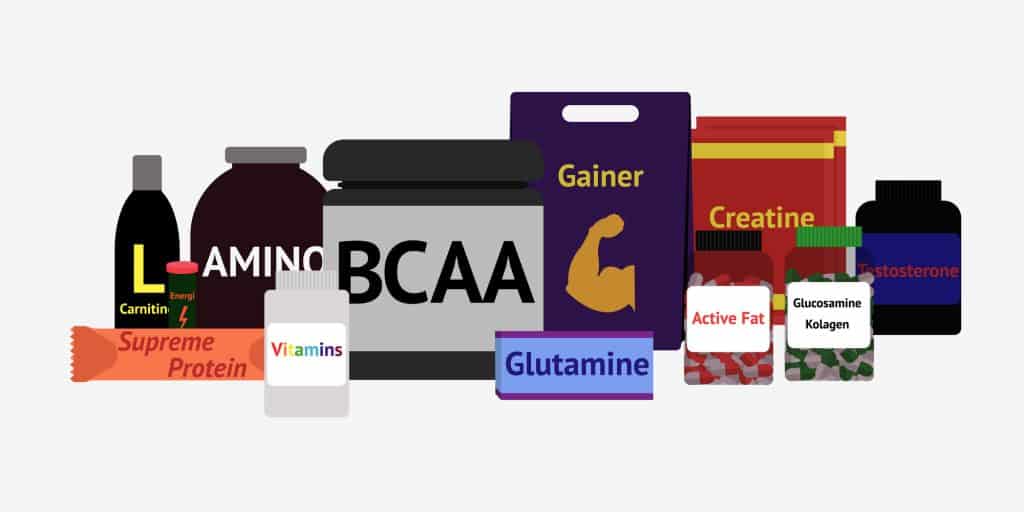
Supplements are not mandatory by any means. However, they can help you reach your goals faster, and act as an insurance against inadequacy of macro and micronutrients intake.
The top supplements that complement this muscle gain-fat loss mission are the following:
- Whey protein—consumption of this protein-laden go-to has shown to promote lean muscle mass when bodybuilding. It contains all the essential amino acids needed for serious gains.
- Creatine—is one of the most researched supplements around. It can build and preserve muscle, plus it replenishes ATP stores—the energy cells that power muscle contractions. Creatine is a proven performance and recovery enhancer.
- Stimulant-free fat burners—curb the appetite, lift energy levels, increase your metabolism, and the body’s fat-burning mechanisms.
- BCAAs—include leucine, isoleucine, and valine. They’re essential for muscle growth—leucine is responsible for kick-starting protein synthesis. Found in most sources of animal protein such as poultry and fish, they constitute approximately 14 percent of the amino acids in your body.
- Beta-Alanine—another amino acid that boosts performance. It reduces acidosis, limiting muscle fatigue during exercise, and post-workout. Consuming 4 grams per day over two-months has shown to increase lean mass.
The Takeaway
According to science, you can build muscle and lose weight at the same time. Yet, it does require some careful thought and serious willpower.
Pay attention to your body-fat percentage because it enables you to chart your progress quickly. If you can maintain a sufficient caloric deficit, stick with your workout plan, and monitor nutritional intake—losing weight and gaining muscle will be on your horizon.
Don’t overlook sufficient shut-eye and factor in recovery days—they’re essential. With this regime, you’ll be thankful you have them.


